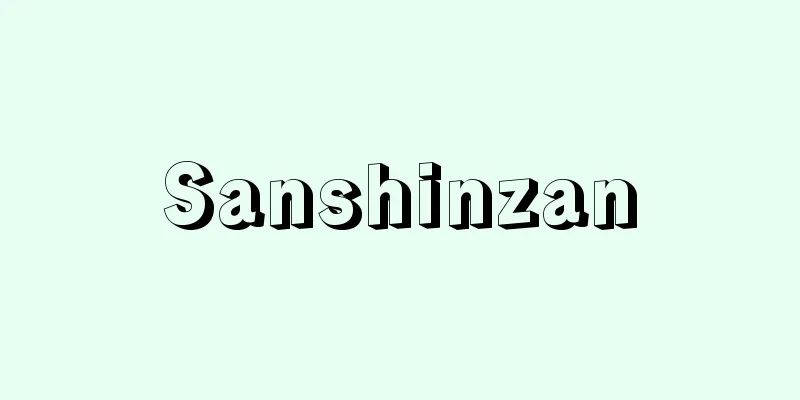Appeal - Osso

|
In the Edo period, this meant filing a complaint or petition without going through the prescribed procedures. In litigation, for example, even if the case was under the jurisdiction of the Hyojosho (council of judges), the petition should have been submitted to the respective Bugyosho (magistrate's office) for temples and shrines, towns, or accounting, but was submitted directly to the Hyojosho. Direct petitions (jikiso), running petitions (kakekomiuttae), and palanquin petitions (kagoso) are also appeals in the broad sense. These were made when the village headman or deputy governor would not take the petition. Direct petitions meant submitting petitions directly to the shogun or daimyo, while kagoso meant throwing petitions into the palanquin of a senior councilor or feudal lord on the way, or making the petition directly. Running petitions meant running to a magistrate's office, a powerful person in the shogunate, or the lord's residence to petition when a petition was not accepted through the normal procedures. Famous examples of direct appeals include Sakura Sogoro, known as a righteous citizen, and Haritsuke Mozaemon, but generally those who appealed directly received the severe punishment of death. In other cases, all those who appealed were punished. In the Kamakura and Muromachi periods, kosou was a system of requesting a retrial to remedy errors in judgment, and the kosoukata (head of the court or magistrate) was in charge of the hearings. [Ryosuke Ishii] [Reference] |Source: Shogakukan Encyclopedia Nipponica About Encyclopedia Nipponica Information | Legend |
|
江戸時代、所定の手続を経ないで訴えまたは願い出ること。訴訟については、たとえば、評定所(ひょうじょうしょ)の管轄する事件であっても、訴状は寺社、町または勘定の各奉行所(ぶぎょうしょ)に提出すべきであるのに、直接評定所に提出する類をいう。直訴(じきそ)、駈込訴(かけこみうったえ)および駕籠訴(かごそ)も広い意味の越訴である。名主、代官らが訴願を取り次いでくれないときに行われたもので、直訴は将軍、大名などに直接願い出ることをいい、駕籠訴は途上で老中や領主などの駕籠に訴願書を投げ入れたり、または直接訴願することをいう。駈込訴は、通常の手続では訴願が受理されないとき、奉行所や幕府の有力者、領主の屋敷などに駆け込んで訴願することをいう。義民(ぎみん)といわれる佐倉惣五郎(そうごろう)や磔(はりつけ)茂左衛門などは有名な直訴の例であるが、一般に直訴した者は死刑の厳罰を受けた。その他の場合にも、訴願した者はいずれも処罰された。なお、鎌倉・室町時代の越訴は、判決の過誤を救済する再審請求制度であり、越訴方(頭人(とうにん)・奉行人)が審理を担当した。 [石井良助] [参照項目] |出典 小学館 日本大百科全書(ニッポニカ)日本大百科全書(ニッポニカ)について 情報 | 凡例 |
Recommend
Hieron [II] - Hieron
King of Syracuse in Sicily (reigned 269-215 BC). I...
Umberto I - Umberto
…The family originated in the 11th century with U...
Glandular cell
...In addition, plants also have glandular tissue...
Salman Schocken
1877‐1959 Jewish publisher. A German Jew from Pose...
Pseudo-environment
...Of course, many people had issued similar warn...
Margin deposit - itakuhoshokin
This is the security deposit paid to a securities ...
Iwaki River
A river that flows through the western part of Ao...
Wing span
Aerodynamics is the process by which the airfoil ...
Counting circuit - keisuukairo (English spelling) counting circuit
A flip-flop is a digital electronic circuit that c...
"Musical Feast" - Ongaku no Kyoen
…All of his secular music, written with text, is ...
Regularity of phonological change
…However, this does not always occur uniformly, a...
ABS resin - ABS copolymer
A synthetic resin made of acrylonitrile (A), buta...
Tokyo Women's Medical University
It is a private institution. It was founded in 19...
Okura Museum of Art
Located in Toranomon, Minato-ku, Tokyo, this is Ja...
Monochlamydeous flower
...The flowers of Mirabilis and Daphne daphne loo...









